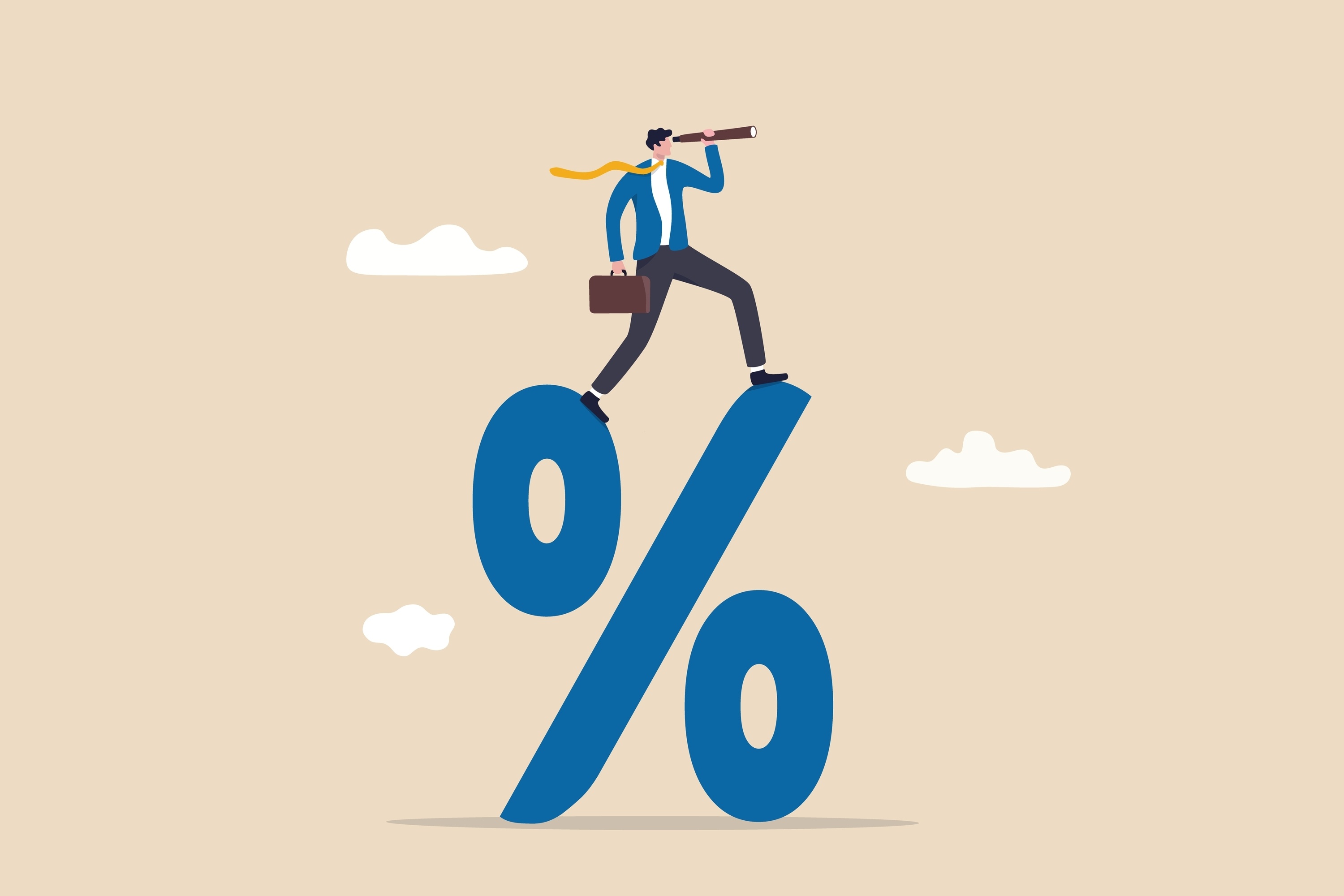
In its June 2024 interest rate announcement, the Bank of Canada lowered the policy rate by 25 basis points to 4.75%, after holding it at 5% since July 2023. This decision reflects the notable decrease in inflation as reported by Statistics Canada, which dropped to 2.7% in April 2024 ─ the Bank expects this trend will continue towards its 2% target. Although the interest rate reduction is a positive development, the situation remains challenging for Canada’s business owners. A policy rate of 4.75% is still relatively high, resulting in elevated commercial bank rates. Consequently, borrowing costs for businesses and individuals remain substantial, perpetuating a constrained financial and economic environment.
Recent CFIB surveys highlight a concerning trend among business owners in the face of high interest rates. In our September 2023 Your Voice Survey, over half of business owners (56%) indicated having already experienced negative impacts from high interest rates. Additionally, one in four (24%) small business owners anticipated future impacts on their business, likely because the full effects of interest rate hikes on the economy and financial system can take up to 18 to 24 months to materialize.
More than 1 in 2 businesses are negatively impacted by high interest rates, another 1 in 4 feel they will be impacted in the future

Source: The CFIB omnibus survey Your Voice – September 2023 survey, was conducted online September 7-22, 2023. A total of 2,539 small business owners from Canada answered the question below. For comparison purposes, a probability sample with the same number of respondents would have a margin of error of +/- 1.9%, 19 times out of 20.
Question: How have rising interest rates impacted your business so far? (Select one)
“Clients do not have as much extra funds so they don't come to the business as often.”
- Social services business, Alberta
“Due to the interest rates levels, housing investment and renovation marketing were down so much, so our sales this year dropped down 20% compared to last year.”
- Wholesale business, Ontario
Further, our April 2024 Your Business Outlook Survey examined the impacts of interest rate hikes and revealed that about four in ten (42%) business owners had to increase their prices, 41% experienced reduced demand for their goods and services while 39% faced higher long term financing costs.
About 4 in 10 businesses had to increase their prices, experienced reduced demand or are facing higher financing costs due to interest rate hikes

Source: The CFIB Your Business Outlook Survey was conducted online April 7-22, 2024. A total of 647 small business owners from Canada answered the question below. For comparison purposes, a probability sample with the same number of respondents would have a margin of error of +/- 3.9%, 19 times out of 20.
Question: Have recent interest rate hikes affected your business in a major way, and if so, how? (select as many as apply)
To provide a context for these findings, particularly regarding financing costs, data from CFIB’s Monthly Business Barometer reveals that as of May 2024, the share of Canadian small and medium-sized businesses (SMEs) reporting that borrowing costs are a major input cost constraint is nearly double its historical average. This underscores an alarming situation. With this restricted borrowing capacity, business owners have less ability to invest in their operations, further complicating their economic outlook amidst high-cost constraints and pressures.
Almost 1 in 2 SMEs report borrowing costs as a major input cost constraint (% response)

Source: The CFIB Monthly Business Barometer, February 2009 to May 2024.
Question: ‘What types of input costs are currently causing difficulties for your business?' (Borrowing costs)
Many SMEs were compelled to accumulate debt to weather the storm during the pandemic. The dual pressure of servicing debt while striving to regain financial footing is a challenge that demands astute financial management and resilience. SMEs find themselves navigating a complex path, trying to find a balance between their operational sustainability and financial stability in a post-pandemic era. This financial uncertainty can create a climate of permanent fragility for SMEs, forcing them to find ways to adapt to competitive pressures, higher borrowing costs, and market changes.
“With the rise in interest rates, the rates for the two floorplan companies we use for equipment inventory have risen to over 14%. This has drastically affected our profit margins and the amount of inventory we can stock, resulting in lost sales and profits.”
- Personal services business, Ontario
“ High interest rates have reduced our overall business income due to the slow down in the real estate market and home renovation as people have larger mortgage payments and can’t afford to buy, improve or renovate their homes.”
- Finance, Insurance, Real Estate & Leasing, British Columbia
High interest rates extend beyond the immediate business landscape to the broader economy. The correlation between interest rates and borrowing costs hampers sustained economic growth, as reflected by GDP trends. With the high cost of capital acting as a deterrent for businesses to engage in robust investment activities, the annual real GDP growth is projected to stagnate, slowing from 1.1% in 2023, to 0.7% in 2024, before rebounding to 1.9% in 2025. Consequently, the overall economic trajectory is at risk of being hampered by a reduced capacity for businesses to drive productivity and contribute to economic expansion. As policymakers assess the situation, finding a balance between managing interest rates and fostering economic growth becomes crucial for steering Canada's economy towards a more prosperous path.
Additionally, high interest rates constrain sales and demand for SMEs. The monetary policy is likely to remain relatively restrictive in the months ahead, with further rate cuts happening gradually and in small increments (0.25%). At the same time, many consumers are renewing their mortgages at significantly higher rates than five years ago. This situation will continue to limit disposable income on the consumer side, applying further downward pressure on the economy.
For SMEs, this creates a challenging environment where reduced consumer spending power translates into lower sales and revenue. The higher interest rates not only increase the cost of borrowing for expansion and operational needs but also reduce the overall market demand for their products and services. This dual pressure can force small businesses to scale back their operations, delay growth plans, or even struggle to maintain current levels of service and employment.
Moreover, the ripple effect of constrained consumer spending extends to various sectors, exacerbating the financial strain on SMEs. Retail, hospitality, and other consumer-facing industries are particularly vulnerable, as they rely heavily on discretionary spending. The prolonged period of high borrowing costs and limited disposable income can lead to a cycle of reduced business activity and layoffs, further dampening economic growth and consumer confidence.
Elevated interest rates not only impede business creation by making lending more costly for aspiring entrepreneurs, but also pose significant challenges to existing businesses looking to expand or sustain operations. Added pressures from other historically high costs, such as wages, fuel and energy, and insurance put Canadian small businesses at risk.
While high interest rates may serve as a tool to fight inflation, governments of all levels must provide essential support to SMEs to help them cope with the significant pressure such policy creates. Here are some measures that could be implemented:
- Reduce the overall tax burden
- Increase the small business deduction threshold to $700,000 and index it to inflation
- Improve the investment climate for non-traditional sources of financing to provide more financing options to SMEs (such as a tax credit for investing in a small business)


Alchad Alegbeh and Laure-Anna Bomal, "Bank of Canada interest rate cuts have started: Can small businesses breathe a sigh of relief yet?", CFIB, InsightBiz blog, June 7, 2024, https://www.cfib-fcei.ca/en/research-economic-analysis/bank-of-canada-interest-rate-cuts-have-started-can-small-businesses-breathe-a-sigh-of-relief-yet.
The views expressed in this post are those of the author(s) and do not necessarily reflect the position of the Canadian Federation of Independent Business. Any errors or omissions are the responsibility of the author(s).


